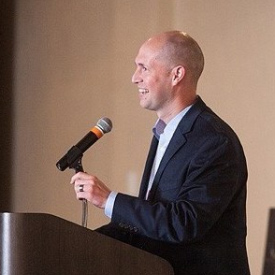Real Community
Truly valuable questions are stubborn, refusing to leave your mind at peace with simple answers. In some cases, even time will not make them go away.
My mind has been occupied of late with questions of community and connectedness and they simply will not leave me alone. What is real community? What does it look like? How could it be restored, once lost? Others, of course, follow on their heels.
I recently stumbled upon an interview of Wendell Berry at the 2009 Wisconsin Book Festival, in which he responds to a variety of questions about life, people, and farming. While the entire talk is entertaining and valuable, his thoughts on community were of particular interest to me.
Specifically, Berry was asked for his thoughts on the “newly emerging digital communities” or internet-based communities. “Are they credible forms of community?”
He replied:
“Well, we’re just flooded with language now, which means that we’ve got to be careful with language. Now you can speak of a digital community if you want to, but all I ask is that you recognize you’re using a metaphor. A real community…it’s the people and the place and everything else that’s in it. And they’re there together, and they’re interdependent. And we’re just trying, in the most awkward way – like a bunch of children – trying to understand our responsibility toward those other neighbors that are not people we like or that are not human.”
As I have mentioned in a previous article, people need community, but they seek to fulfill that need with artificial or easier means rather than doing the hard work of establishing real community. It is far easier to “friend” someone on Facebook than to develop an actual friendship. It is far easier to “follow” someone on Twitter than it is to spend real time with them in real face-to-face conversation (which are generally much longer than 140 characters). Digital or artificial communities do not require us to accept or even deal with the quirkiness of people. We can simply “unlike,” “unfollow,” or “unfriend” them – i.e., kick them out of our “community.”
Artificial community does not require us to work towards anything together or build anything in which we are all invested. They require us to risk so little, whereas establishing real community requires time, patience, investment, tolerance, and love. As Berry noted, digital communities are no more than metaphors for real community.
But if such modern substitutes are no good, what are we to do? How is genuine community established in a world of false alternatives and a break-neck pace of life? Our trouble finding an answer is highlighted in that we often seek to solve the problem by offering more of the false solution. Teachers desire greater connection and conversation with their students, so they implement more technology inside and outside the classroom to “engage” them. This, of course, can fuel the problem, validating such means in the minds of students and driving classroom culture even further from true community.
I do not claim to have the answers to such issues, but I do hope that a conversation about solutions can continue – to great benefit. Ideally, such dialogue will develop in your place, among friends and family, producing great fruit where you are. So, let the conversation continue, moving us beyond words to actions that will establish real community among us – in our homes, schools, churches, and towns.

Brian Phillips
Dr. Brian Phillips serves as a pastor in Concord, NC, where he lives with his wife and their four children.










